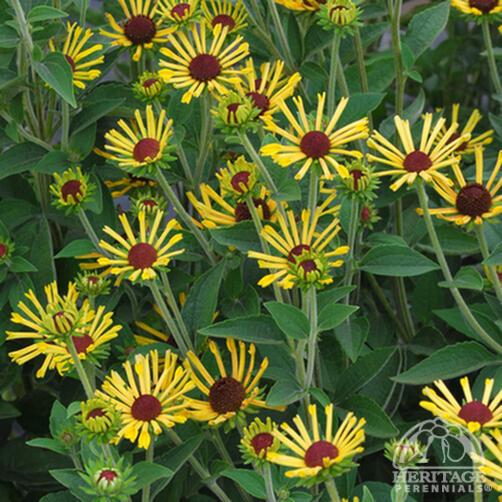Rudbeckia subtomentosa ‘Little Henry’
Plant number: 1.455.320Sweet Coneflower is native throughout the Midwest and down to Texas. This distinctive selection is a narrow, upright compact grower with strong branching stems and attractive green foliage topped off with charming, brown-eyed daisies that have unusual narrow or quilled yellow petals, appearing midsummer. Reported to be similar to R. ‘Henry Eilers’ but one third shorter. Long-blooming. Flowers are attractive to butterflies and excellent for cutting. Grows in a variety of soil conditions from moist to fairly dry. Cut back to the ground in early spring. A recent introduction from Terra Nova Nurseries of Oregon. USPP#23590: unlicensed propagation prohibited. Registered with COPF. Further details for |
Rudbeckia subtomentosa ‘Little Henry’
Plant number: 1.455.320Sweet Coneflower is native throughout the Midwest and down to Texas. This distinctive selection is a narrow, upright compact grower with strong branching stems and attractive green foliage topped off with charming, brown-eyed daisies that have unusual narrow or quilled yellow petals, appearing midsummer. Reported to be similar to R. ‘Henry Eilers’ but one third shorter. Long-blooming. Flowers are attractive to butterflies and excellent for cutting. Grows in a variety of soil conditions from moist to fairly dry. Cut back to the ground in early spring. A recent introduction from Terra Nova Nurseries of Oregon. USPP#23590: unlicensed propagation prohibited. Registered with COPF. Further details for |






